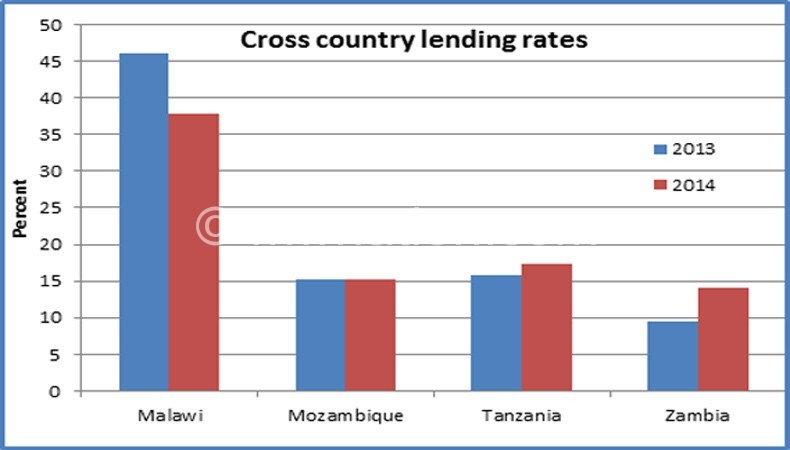Lending rate projected to fall to 37.8 percent
Malawi’s average lending rate, considered one of the highest in the world, is projected to fall from 46 percent in 2013 to 37.8 percent this year, providing a glimpse of hope to borrowers.
United Kingdom based Economist Intelligence Unit (EIU) has indicated that the average lending rate is projected to fall by 8.2 percentage points to 37.8 percent in 2014.

Malawi’s base lending rates started to rise in May 2012 in the wake of the liberalisatiaon and floatation of the kwacha which prompted the Reserve Bank of Malawi (RBM) to implement prudent policies to rein in inflation.
To ease inflationary pressure, the central bank raised the then bank rate, a precursor to the current policy rate along with a hike in the Liquidity Reserve Requirement (LRR).
Consequently, Malawi’s base lending rate rose from an average 17.8 percent in April 2012, peaked at 40.8 percent in June last year before starting to fall to 37.1 percent in May this year.
However, regardless of the projected fall of the average lending rate this year, compared to Malawi’s neighbours—Zambia, Tanzania and Mozambique—the rate is far more prohibitive raising fears of reduced capital investments and dwindling private sector growth.
Specifically, projections provided by EIU indicate that neighbouring Zambia’s weighted base rate will rise from 9.5 percent in 2013 to 14 percent in 2014 but still way above Malawi’s base lending rate.
According to the projections Mozambique’s rate will remain at 15.3 percent in 2014 while Tanzania’s will rise from 15.8 percent last year to 17.4 percent this year.
But an investment advisory firm, Nico Asset Managers in its July 2014 economic report released recently has cautioned that high interest rates may lead to loan impairment and may cause relocation of companies to other countries which have better prospects.
Outlining mitigating factors against high lending rates, analysts have urged that government should provide incentives to the private sector including tax measures and ensure a decline in inflation.
Based on the performance of the economy, in July this year the monetary policy rate was reduced to 22.5 percent from 25 percent since December 2012 while the Lombard rate was cut from 27 percent to 24.5 percent.
In response to the reduction in the policy changes, commercial banks reduced their lending rates to an average of 34.22 percent from a previous average of 36.52 percent, according to available figures.
To further ensure that that policy rate was effective in guiding commercial interest rates, recently the central bank announced that it was defending its policy rate by rejecting Treasury Bills (T-Bills) bids whose yields were above two percentage points below the RBM bench mark rate—above 20.5 percent.





